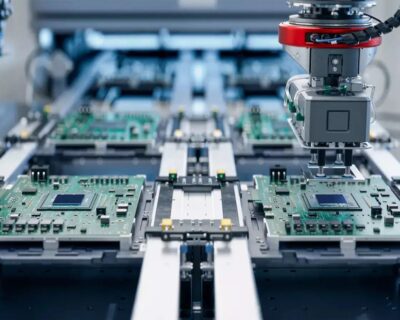Blogs

The Secret Behind Naval Durability: DOMADIA™ CuNi20 Alloy UNS C71000
Visualize a naval vessel, stationed for over a decade in brine-heavy seas. It has withstood years of punishment — from corrosive salt, unpredictable currents, and relentless biofouling. Yet, remarkably, its hull looks practically untouched. So, what’s the secret behind this resilience?
Behind the curtain of maritime durability lies a silent warrior — DOMADIA™ CuNi20. Because of its unique composition and inherent resistance, it remains a preferred choice for the most demanding marine applications. Consequently, while others rust away, DOMADIA™ CuNi20 endures.
Chemical Composition of DOMADIA™ CuNi20 (UNS C71000)
| Element | % Composition |
| Copper (Cu) | ~79.0% |
| Nickel (Ni) | ~20.0% |
| Manganese (Mn) | 0.5–1.0% |
| Iron (Fe) | ≤ 0.5% |
| Others | Trace |
This composition ensures the alloy’s unique combination of anti-corrosive and mechanical strength properties, even in high-chloride, warm-water conditions.
Key Properties
- High corrosion resistance in saltwater & aggressive industrial atmospheres
- Excellent resistance to stress corrosion cracking
- Non-magnetic properties
- Good cold and hot workability
- Superior biofouling resistance
- Thermal stability – retains properties over a wide temperature range
Available Forms
DOMADIA™ CuNi20 is available in a wide range of forms to meet your fabrication needs:

Ideal for marine manufacturing, heat exchangers, and custom components.
Technical Specifications
- Material No.: CN 104 / C71000
- Standard: BS 2870
- Density: ~8.9 g/cm³
- Melting Point: ~1170–1240 °C
- Tensile Strength: 290–380 MPa (annealed)
- Electrical Conductivity: ~5% IACS
- Thermal Expansion: ~17.5 µm/m°C
Key Features and Applications:
1. Marine & Offshore Applications
- Seawater Piping Systems
- Bilge Systems
- Onboard Cooling Systems
- Heat Exchangers
- Condensers and Evaporator Tubes
- Desalination Plant Tubing
- Seawater Intake and Outlet Pipes
- Erosion-corrosion Exposed Components
Why? CuNi20 is the go-to alloy in shipbuilding and offshore systems for its excellent resistance to seawater corrosion, biofouling, and erosion-fatigue.
2. Heat Transfer & Fluid Systems
- Heat Exchanger Plates and Tubes
- Condensers
- Evaporator Units
- Hydraulic Lines
Why? The alloy’s high thermal conductivity and structural stability make it perfect for heat and fluid exchange applications, especially in harsh environments.
3. Electrical & Electronic Components
- Electrical Springs
- Communication Relays
- Condenser Plates
- Resistors
- Electrical Contacts and Connectors
Why? Excellent formability and stable conductivity under corrosive conditions support performance in sensitive electronic assemblies.
4. Architectural & Decorative Applications
- Architectural Panels and Fixtures
- Decorative Construction Elements
Why? CuNi20’s silver-like appearance, formability, and tarnish resistance make it ideal for high-end decorative usage.
5. Industrial Fabrication Components
- Ferrules
- Welded Assemblies
- Tubesheets
- Fittings
Why? Excellent weldability and mechanical strength across a wide temperature range make this alloy a fabricator’s favorite.
6. Welding Applications
DOMADIA™ CuNi20 supports a wide range of welding processes:
- Soldering
- Brazing
- Coated Metal Arc Welding
- Gas Shielded Arc Welding
- Seam and Spot Welding
- Oxyacetylene Welding
- Butt Welding
🔧 Why? The alloy’s metallurgical stability allows clean joints and minimal risk of microstructural cracking.
7. Hot Working
- Forged Marine Components
- Custom Alloyed Shapes (at 871–1038°C / 1600–1900°F)
Why? Great hot-working properties make it suitable for customized shapes and formed parts in pressure-rated or precision applications.
Other Designations
Equivalent materials to UNS C71000 copper nickel alloy are:
| ASME SB111 | ASME SB359 | ASME SB395 | ASME SB466 |
| ASTM B111 | ASTM B122 | ASTM B206 | ASTM B359 |
| ASTM B395 | ASTM B466 | ASTM B543 | ASTM B694 |
| ASTM F467 | ASTM F468 | SAE J461 | SAE J463 |
Fabrication and Heat Treatment
Machinability
The machinability rate of UNS C71000 copper nickel alloy is 20.
Welding
Soldering, brazing, gas shielded arc welding, coated metal arc welding, seam welding, spot welding, oxyacetylene welding, and butt welding are considered as suitable for UNS C71000 alloy.
Hot Working
The hot working capacity of UNS C71000 copper nickel alloy is good with the recommended hot working temperature ranging between 871 and 1038°C ( 1600 and 1900°F).
Cold Working
The cold working capacity of UNS C71000 is good.
Annealing
The annealing temperature of UNS C71000 copper nickel alloy is between 649 and 816°C (1200 and 1500°F).
Conclusion
In conclusion, DOMADIA™ CuNi20 (UNS C71000) is not merely a material — it’s a long-term solution for extreme environments. Thanks to its outstanding corrosion resistance, excellent formability, and proven performance in both marine and industrial systems, it continues to set the benchmark for copper-nickel alloys.
Moreover, because it offers seamless weldability and superior thermal stability, this alloy proves ideal for everything from seawater piping to electrical springs. Unlike conventional materials that degrade under pressure, CuNi20 thrives. As a result, your systems stay reliable, efficient, and safe — year after year.
So, if you’re seeking a material that combines resilience, versatility, and value, look no further. Choose the metal that even the ocean respects. Choose DOMADIA™ CuNi20.
📞 Contact us now to get material samples or a custom quote.
Visit our website https://domadia.net/
FAQs
Yes, copper-nickel brake lines are widely regarded as safe and highly reliable. They offer excellent corrosion resistance, flexibility for easy installation, and long-lasting performance. Many automotive manufacturers and mechanics prefer copper-nickel over traditional steel lines due to its durability, especially in regions with heavy road salt usage.
No, copper and nickel are distinct elements with different physical and chemical properties. Copper is a reddish-brown, highly conductive metal used in electrical wiring and heat exchangers. Nickel is silver-white, harder, and more corrosion-resistant, often used for alloying to improve toughness and resistance. When combined, they form high-performance alloys like CuNi20 (C71000) with enhanced marine and industrial capabilities.
Copper-nickel brake lines are favored for their superior resistance to corrosion, especially in environments where road salt is prevalent. Additionally, they are easier to bend and flare, simplifying installation and maintenance compared to steel lines.
No, copper-nickel coins are not magnetic. Copper and nickel are both non-magnetic metals in their pure form and when alloyed together. This property is often used to test the authenticity of coins, especially when distinguishing them from counterfeit versions that may use magnetic materials.


